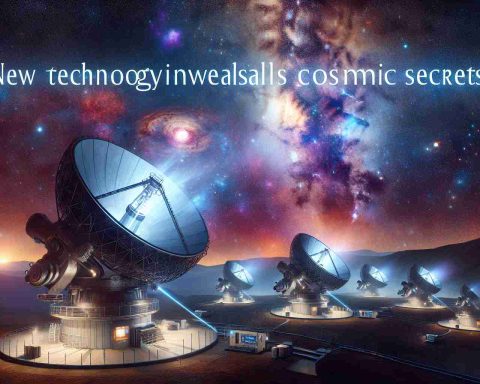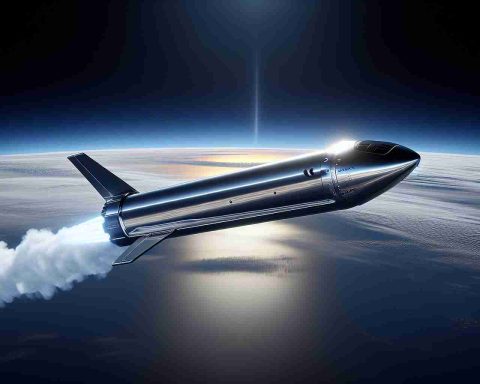The Journey of the James Webb Space Telescope
Three years ago, the launch of the James Webb Space Telescope (JWST) marked an extraordinary leap in our quest to explore the universe. As the largest and most powerful telescope ever sent into space, it has transformed our perception of celestial phenomena in a remarkably short time.
Since its debut, JWST has ventured deep into the cosmos, examining our Solar System, analyzing distant planetary atmospheres for potential signs of life, and investigating the early universe’s formation. This ambitious exploration has led to several groundbreaking revelations.
One of the most astonishing discoveries revolves around the earliest galaxies, confirmed to have existed when the universe was just 300 million years old. Surprisingly hefty for their age, these galaxies challenge our understanding of star formation—appearing bright and blue while lacking the usual dust that would typically dim their light.
Moreover, JWST has unearthed peculiar chemical compositions within these infant galaxies. Notably, an abundance of nitrogen was identified, raising questions about the yet-undefined processes from the universe’s formative years.
Furthermore, JWST has illuminated our understanding of cosmic evolution by examining faint galaxies that appeared during the transition from the “cosmic dark ages.” These tiny yet energetic galaxies hint at a critical role in shaping the conditions necessary for star formation to halt.
With each revelation, JWST propels us deeper into the frontier of cosmic discovery, unveiling secrets of the universe’s birth that continue to intrigue scientists worldwide.
Unlocking the Cosmos: New Discoveries from the James Webb Space Telescope
The launch of the James Webb Space Telescope (JWST) three years ago has revolutionized our comprehension of the universe. As the largest and most advanced space telescope ever, JWST has already yielded groundbreaking findings, drastically enhancing our understanding of celestial phenomena. Here’s an exploration of its key features, findings, and implications for both science and society.
Key Features of JWST
– Advanced Technology: JWST utilizes a 6.5-meter primary mirror made of 18 hexagonal segments, allowing for unprecedented sensitivity and resolution in infrared observations. This capability enables the telescope to peer through cosmic dust and gas clouds.
– Instrumentation: Equipped with four main scientific instruments—NIRCam (Near Infrared Camera), NIRSpec (Near Infrared Spectrograph), MIRI (Mid-Infrared Instrument), and FGS/NIRISS (Fine Guidance Sensor / Near Infrared Imager and Slitless Spectrograph)—JWST can capture stunning images and detailed spectra of astronomical objects.
New Discoveries
1. Early Galaxies
JWST’s observations have confirmed the existence of the earliest galaxies, emerging when the universe was merely 300 million years old. These galaxies challenge previous models of cosmic evolution, as they are brighter and larger than anticipated.
2. Chemical Diversity
The telescope has also identified unique chemical signatures within these ancient galaxies, particularly an unexpected abundance of nitrogen. This discovery prompts further investigation into the formation processes and conditions of the early universe.
3. Cosmic Evolution Insights
JWST’s ability to observe galaxies transitioning from the “cosmic dark ages” reveals their crucial role in creating environments conducive to star formation. These observations shed light on how galaxies evolve and provide clues to the history of the universe.
Use Cases of JWST’s Findings
– Astrobiology: Analyzing exoplanet atmospheres may provide insights into habitability and the signs of life beyond our Solar System.
– Cosmology: Understanding the formation and evolution of early galaxies helps refine models of the universe’s expansion and structure.
Limitations
While JWST offers unparalleled observations, it is limited by:
– Field of View: Unlike ground-based telescopes, JWST’s field of view is smaller, which can limit its ability to survey large areas of the sky quickly.
– Operational Challenges: Delicate instruments require careful operation and maintenance, reducing the time available for observations.
Security and Sustainability Aspects
JWST employs advanced cybersecurity measures to protect its data from potential threats, ensuring that scientific discoveries remain intact and safeguarded against unauthorized access. The telescope’s design also considers sustainability in its mission planning, promoting the responsible use of resources in space exploration.
Pricing and Funding
The total cost of the JWST mission, including development, deployment, and operations, is estimated at approximately $10 billion. Funding has primarily come from NASA, with contributions from the European Space Agency (ESA) and the Canadian Space Agency (CSA).
Future Predictions and Trends
As JWST continues its mission, analysts predict several significant trends:
– Increasing Collaboration: The telescope will likely encourage more international collaborations in space science, leading to shared discoveries and advancements in technology.
– Education and Outreach: JWST’s findings will play a crucial role in educational initiatives, inspiring the next generation of scientists and fostering public interest in space exploration.
Conclusion
The James Webb Space Telescope is not merely a tool for astronomers; it is a gateway to understanding our universe’s origins and destinies. Each discovery paves the way for new questions and explorations, inviting humanity to ponder its place in the cosmos. With ongoing observations and future innovations, JWST stands at the forefront of astronomical research for years to come.
For more information and updates on the James Webb Space Telescope, visit NASA.

















